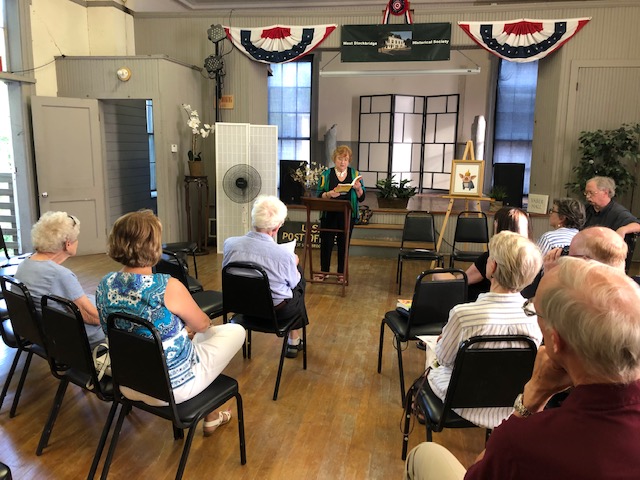
On Friday, July 26th we held a reading of my novel, The Circus Pig and the Kaiser in the West Stockbridge Historic Old Town Hall. I tried to bring to life the madcap characters in my novel. I also described the predicament my main character Durov faces when he is told he can’t perform his pig act that mimics the war-mongering Kaiser. This places his desire to exercise his freedom of expression square up against an authoritarian ruler.
Berkshire Eagle Editorial Page Editor, Bill Everhart joined us for a discussion about freedom of speech – a timely subject these days. The discussion (which I’ve updated for the horrific shootings in El Paso and Dayon) went along the following lines.
- The standard for what constitutes free speech in the US is commonly thought to be derived from a 1919 case in which Justice Oliver Wendell Holmes, Jr. introduced the “clear and present danger” test to determine under what circumstances limits can be placed on First Amendment freedoms of speech, press or assembly. “You can’t shout fire in a crowded theatre” came to be a bright line test of when free speech crossed the line into an act that would precipitate violence. “Your right to swing your arm ends at the tip of the other man’s nose” is another way of looking at this standard.
- But now we are faced with violence-advocating speech not only by individuals in personal appearances but in many electronic forms. Facebook and Twitter are struggling to remove hate speech postings that will likely lead to violence, but still these postings find their way into the dark corners of our society. And what about seeming to approve shooting your former political opponent, as President Trump did in a rally in the Panhandle in Florida? And what about his rantings about Mexican and Latin American infestations and invasions, language that was directly referenced by the El Paso shooter?
- It used to be that the remedy for “hate speech” was “more speech”. In the mid-1970’s, a Neo-Nazi group, ironically backed by the American Civil Liberties Union, was given permission under the First Amendment to hold a rally in Skokie, Illinois, an enclave with a large proportion of Jewish Holocaust survivors. No violence – only emotional suffering by the local population – was apparently contemplated and was insufficient cause to limit the free speech rights of the Neo-Nazi group. Compare that to the recent events in Charlottesville that led to one death by an out-of-control protester. Is it time to revisit the issue of freedom of speech when the correlation of hate speech becomes so much more believable, as in El Paso?
- With journalists under Stalinesque attack as “Enemies of the People” they especially must be on high alert for violence directed at them. This is increasingly motivated by a “base” that seems immune to obeying the boundaries of where to swing your arm (or aim your assault rifle) and where that tip of the nose is for journalists, political opponents and just plain citizens going about their day.
- Unfortunately, the means for legally revisiting the issue of freedom of speech are not ideal. And everyone should be concerned about a slippery slope that empowers any entity in today’s polarized society to be the arbiter for limiting free speech.
Our discussion in West Stockbridge did not produce a solution or a clear way forward, but it’s clear that one should be developed – before the violence precipitated by hate speech overwhelms our society.

